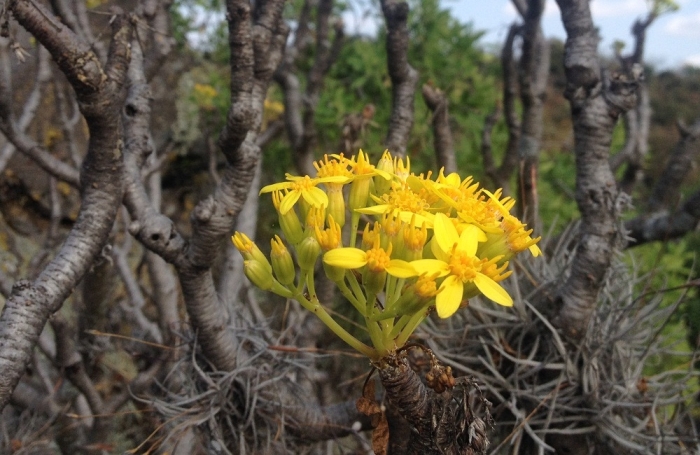Broomstick Tree
(Pittocaulon praecox)
Broomstick Tree (Pittocaulon praecox)
/
/

Bodofzt
CC BY-SA 4.0
Image By:
Bodofzt
Recorded By:
Copyright:
CC BY-SA 4.0
Copyright Notice:
Photo by: Bodofzt | License Type: CC BY-SA 4.0 | License URL: https://creativecommons.org/licenses/by-sa/4.0 | Uploader: Bodofzt | Publisher: Wikimedia Commons |















Estimated Native Range
Summary
Pittocaulon praecox, commonly known as Broomstick Tree, is a deciduous succulent shrub native to the semi-arid regions of Central and Southwest Mexico, particularly found in rocky outcrops and arid scrublands. It typically grows to a height of 4-15 feet (1.2-4.6 meters) and a width of 3-5 feet (0.9-1.5 meters). The Broomstick Tree has a distinctive appearance with its thick, water-storing stems and sparse foliage, which helps it survive in its dry native habitat. It produces vibrant yellow and orange flowers in the spring, which are quite showy and attract pollinators such as bees and butterflies.
The Broomstick Tree is valued for its drought tolerance and unique structural form, making it an excellent choice for xeriscaping and rock gardens. It is also used as an ornamental plant in dry climate gardens for its striking flowers and sculptural quality. In cultivation, it requires minimal maintenance, thriving in full sun and well-drained soils with infrequent watering once established. However, it is sensitive to overwatering and frost, which can damage the plant. Gardeners should be cautious of its potential to become invasive in suitable climates, as it can spread if conditions allow.CC BY-SA 4.0
The Broomstick Tree is valued for its drought tolerance and unique structural form, making it an excellent choice for xeriscaping and rock gardens. It is also used as an ornamental plant in dry climate gardens for its striking flowers and sculptural quality. In cultivation, it requires minimal maintenance, thriving in full sun and well-drained soils with infrequent watering once established. However, it is sensitive to overwatering and frost, which can damage the plant. Gardeners should be cautious of its potential to become invasive in suitable climates, as it can spread if conditions allow.CC BY-SA 4.0
Plant Description
- Plant Type: Shrub, Tree, Succulent
- Height: 4-15 feet
- Width: 3-5 feet
- Growth Rate: Moderate
- Flower Color: Yellow, Orange
- Flowering Season: Spring
- Leaf Retention: Deciduous
Growth Requirements
- Sun: Full Sun
- Water: Low
- Drainage: Fast
Common Uses
Drought Tolerant, Low Maintenance
Natural Habitat
Semi-arid regions of Central and Southwest Mexico, particularly found in rocky outcrops and arid scrublands
Other Names
Common Names: Palo Loco
Scientific Names: , Pittocaulon praecox, Senecio praecox, Senecio praecox var. morelensis, Cineraria praecox, Senecio morelensis,
GBIF Accepted Name: Pittocaulon praecox (Cav.) H.Rob. & Brettell